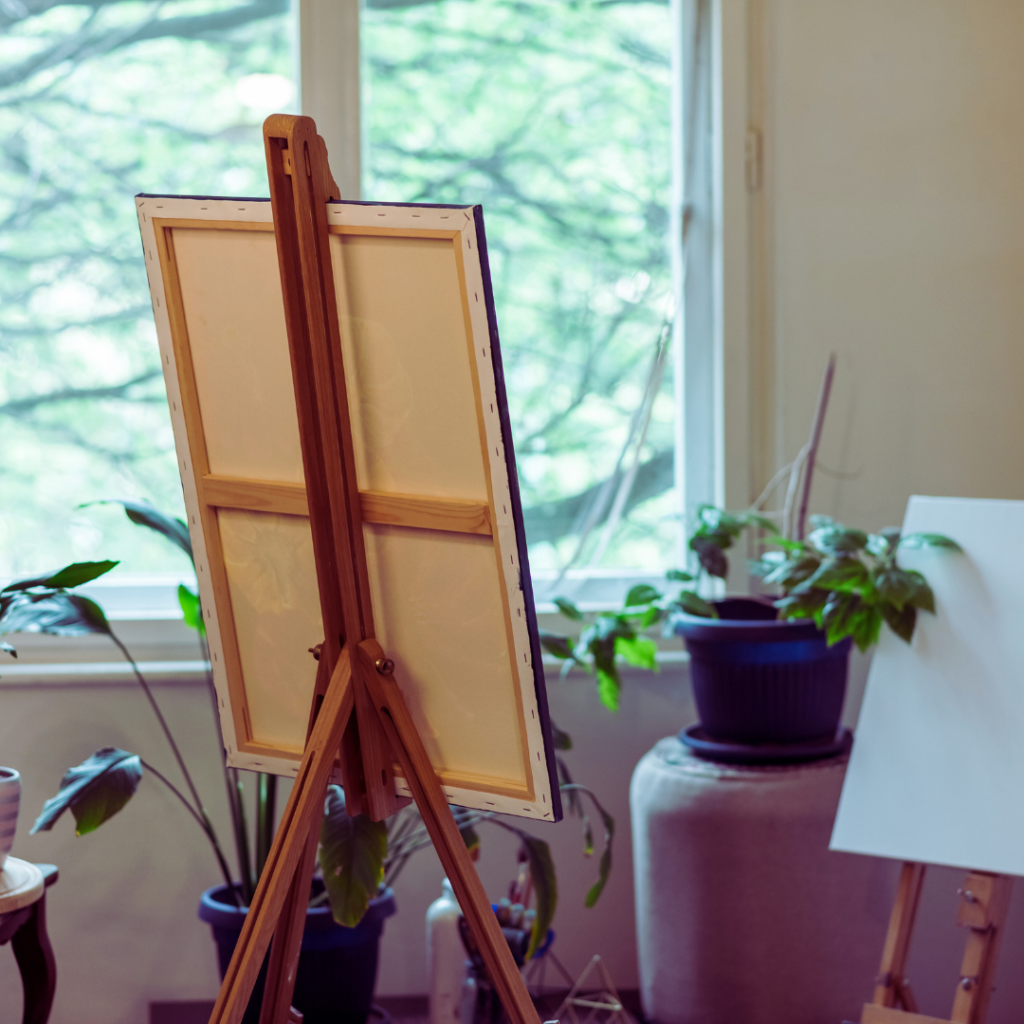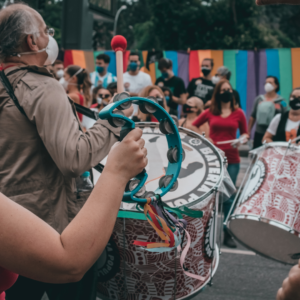Creating a home art studio on a budget can empower anyone to explore their creativity without breaking the bank. By repurposing materials, finding affordable storage solutions, and utilizing natural light, individuals can design a functional and inspiring space. This approach makes art accessible, allowing anyone to transform a corner of their home into a vibrant studio.
Artists can start with simple items like a sturdy table, good lighting, and storage options that won’t overspend their budget. Thrift stores and online marketplaces often have hidden gems that can be adapted for artistic purposes. By focusing on essential tools and materials, one can prioritize their creative needs and space efficiency.
In this journey, it’s important to emphasize personal style and comfort while maintaining functionality. Affordable options inspire creativity, making art more inviting. Achieving a practical art studio out of limited resources is not only possible but can also be a fulfilling project in itself.
Planning Your Home Art Studio
Creating an effective home art studio involves careful consideration of space, budget, and artistic focus. A well-thought-out plan can enhance creativity and streamline the artistic process.
Determining Space and Location
Choosing the right location for a home art studio is crucial. Look for a space that offers good natural light, as it enhances color accuracy and creativity. This could be a spare room, a corner of a living room, or even a well-lit basement.
When selecting a space, consider ventilation, especially for painting mediums like oil paint, which can have strong odors. If working with limited space, vertical storage solutions can help organize supplies without cluttering the area.
Use furniture and equipment that fits the space. A foldable table or easel can save room while allowing flexibility in the workspace. It’s also beneficial to create an inviting atmosphere that reflects personal artistic style.
Budgeting for Your Studio
Establishing a budget is essential for a successful home art studio. Begin by listing necessary supplies, including art materials, workspace furniture, and storage solutions. Prioritize purchases based on immediate needs and preferred mediums.
Consider second-hand furniture or DIY projects to minimize costs. For instance, an old table can be repurposed as an art workstation with a fresh coat of paint. Websites like Facebook Marketplace or local thrift stores can provide affordable options for furnishings.
Allocate funds for essential art supplies as well. Start with basic materials like canvases, brushes, and paints. Many artists find that gradually purchasing higher-quality supplies leads to better results without overwhelming their budget.
Choosing Your Artistic Medium
Selecting a preferred medium is a significant aspect of planning a home art studio. Artists may focus on painting, drawing, or mixed media, which influences their workspace requirements.
For example, an oil painter will need a palette, turpentine, and appropriate canvas sizes. In contrast, a watercolor artist might prioritize a variety of paper types and brushes. Understanding these needs will guide decisions about storage and surface setups.
Additionally, it is important to have a designated area for experimenting with new techniques and styles. An adaptable workspace fosters creativity and encourages the exploration of different artistic processes without the fear of damaging permanent features.
Essential Equipment and Supplies
Creating a functional art studio at home requires a thoughtful selection of equipment and supplies on a budget. Prioritizing basic art supplies, furniture arrangement, and effective lighting can enhance both creativity and workflow.
Securing Basic Art Supplies
He or she should start with essential art supplies that fit their preferred medium. For painting, basic supplies include acrylic or oil paint, brushes in various sizes, palettes, and canvases. Here’s a suggested list:
- Paints: Choose a set of high-quality, budget-friendly acrylic or oil paints.
- Brushes: Select a variety that includes flat and round options in different sizes.
- Canvas: Purchase a mix of stretched canvases and canvas boards.
- Palette: A simple plastic or wooden palette works well for mixing paint.
Shopping online or at local art supply stores during sales can help save money.
Furniture and Storage Solutions
Affordable furniture can significantly boost the studio’s functionality. A folding table or an adjustable-height desk provides a versatile workspace without taking up too much room.
Consider storage solutions such as:
- Shelves: Utilize wall-mounted shelving for canvas storage and art books.
- Tote bins: These can store supplies such as paint tubes, brushes, and markers.
- Rolling carts: They offer mobility and easy access to frequently used materials.
Recycling household items like old bookshelves or drawers can also serve as effective storage.
Lighting and Workflow Optimization
Natural light should be a priority in any art studio. Positioning the workspace near a window allows natural illumination during the day. To enhance the overall lighting:
- Task lights: Opt for adjustable lamps to illuminate specific work areas.
- Soft white bulbs: Use these for artificial lighting to replicate daylight.
- Reflective surfaces: Mirrors or light-colored walls can amplify available light.
A well-lit space directly contributes to improving workflow, making it easier to detail work without straining the eyes. Arranging the workspace for efficiency—keeping supplies within reach—can further streamline the creative process.
Organizing Your Creative Space
Creating an efficient art studio requires thoughtful organization. By maximizing the available workspace and managing supplies effectively, an artist can foster a more productive and inspiring environment.
Maximizing Your Workspace
In a small art studio, every inch counts. Start by selecting a folding table that can be easily stored when not in use, freeing up floor space. Position the table near a window to take advantage of natural light.
Utilize vertical space by installing shelves. Open shelving keeps art supplies visible and accessible. This encourages creativity while maintaining organization.
Consider a sliding cart for mobility. It can hold various supplies and be moved around based on the project. Hooks on walls or pegboards can also store tools, freeing up surfaces for work.
Storage and Managing Supplies
Efficient storage solutions are key to managing art supplies. Use clear bins for organization; labeling each bin helps identify contents at a glance.
Art supplies like paints, brushes, and canvases deserve dedicated spaces. A rolling cart can serve as a mobile workstation, allowing flexibility. It can store everything from mediums to tools.
Group supplies by type or project. This method saves time when searching for materials. Utilize old jars or containers to sort smaller items, keeping counters uncluttered.
Incorporating a caddy for brushes and pencils keeps essential items within reach during sessions. Adopting a routine maintenance schedule ensures that the space remains organized and functional.
Fostering Creativity and Productivity
Creating a home art studio on a budget requires a focus on enhancing creativity and maintaining productivity. By establishing a conducive environment and engaging with others, individuals can effectively nurture their artistic skills.
Inspiration and Artistic Flow
To cultivate creativity, an artist must surround themselves with sources of inspiration. This can include displaying artwork, photos, or quotes that resonate. Creating a vision board can also help visualize goals and ideas.
Organizing the workspace is crucial for an efficient workflow. Keeping supplies accessible and ensuring adequate lighting enhances focus. Additionally, incorporating music or ambient sounds can create a relaxing atmosphere, enabling artistic flow.
Setting specific times for art-making can establish a routine, which is essential for developing techniques and refining an art style. Regular practice aids in overcoming creative blocks and improves overall confidence in creative processes.
Sharing and Evolving Your Art
Connecting with other artists can greatly enhance creativity and productivity. Joining local art groups or online communities facilitates sharing experiences, which may spark new ideas and techniques. Feedback from peers can provide valuable insights that promote artistic growth.
Participating in art challenges or collaborative projects encourages stepping outside of comfort zones. This can lead to the exploration of different media or styles, contributing to the evolution of one’s artwork.
Documenting progress through journaling or sketching can help track development and refine techniques over time. This practice not only builds motivation but also emphasizes the importance of the creative journey.





